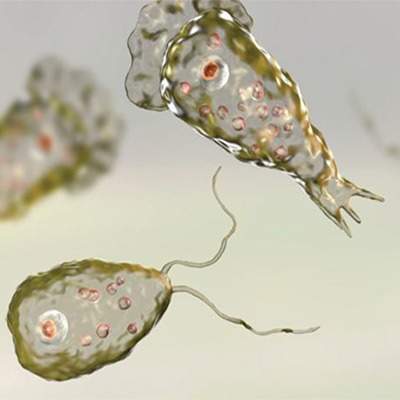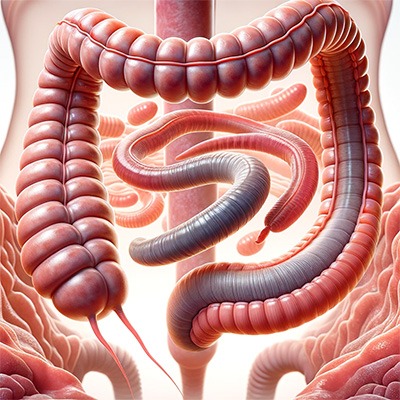Body Invaders: The Reality and Dangers of Human Parasites

In my last article, “Battling Lymphatic System Disorders,” I mentioned that some human parasites could live in your lymphatic system and block lymph drainage. You may have been wondering:
- What are parasites?
- How do parasites get into my body, and, more importantly?
- How to get rid of parasites.?
In this article, we will explore those questions, and I’ll provide some answers.
HUMAN PARASITES
A parasite is an organism that lives in a host and survives by feeding and gaining nourishment and protection at the expense of that host. Although parasites are worldwide, they are more prevalent in some areas.
An interesting fact about parasites is that a parasite can have a parasite. Yikes!!!
Sakinah Bellamy
There are three main classes of parasites that can cause disease in humans: protozoa, helminths, and ectoparasites.
Protozoa
Protozoa are single-celled organisms. They come in many different shapes and sizes. They live in moist habitats, including freshwater, marine environments, and soil. Some are parasitic, which means they live in other plants and animals, including humans, where they can cause disease. Examples of protozoa are Amoeba and Euglena.

- The amoeba is commonly referred to as the “brain-eating amoeba” (Naegleria fowleri) due to its ability to cause a brain infection by entering the body through the nose via contaminated water, causing primary amebic meningoencephalitis (PAM). While such infections are not very common in the United States and usually only affect three people each year, they have a very high fatality rate.
- Euglena is a type of single-celled, flagellate eukaryotic microorganism commonly found in ponds and small bodies of water. These parasites can cause severe blood and tissue diseases in humans. They also affect the eyes, resulting in an infection known as euglenophyte. Symptoms of euglenophyte may include redness, irritation, and sensitivity to light.
Helminths
Helminths are worm-like parasites. They are invertebrates with long, flat, or round bodies. They range in length from less than one millimeter to over one meter. Their effects on humans range from mild to potentially deadly. They are also one of the leading causes of morbidity in the developing world, with over two billion affected. Infection can cause physical, nutritional, and cognitive impairment in young, developing children. The following are some of the most notorious worms.
Roundworms- or nematodes – are slender worms that can live, feed, and reproduce in the human intestines. Infections are usually mild unless they are present in huge numbers. Diseases can be caused by the worm when it gets into the gut, blood, or lymph tissue. These worms can enter a host’s body through various means, such as consuming contaminated food or water, directly penetrating the skin, or being bitten by an insect carrying the worm, like a mosquito.
Giant roundworms can grow incredibly long, sometimes exceeding 30 centimeters (12 inches). Ascaris lumbricoides is a type of giant roundworm that can infect humans and grow up to 35 centimeters in length. This particular roundworm is commonly found in areas with poor sanitation, such as tropical and subtropical regions. The eggs of roundworms are released in feces and can contaminate soil, water, and food.
Humans can contract the roundworm by consuming contaminated food or drink. The eggs hatch in the intestines and migrate to the lungs. After being present in the lungs, the particles are expelled out of the body via coughing and then end up in the mouth, which are then swallowed. They travel to the stomach before entering the intestines where they live. If many worms are present, the host may experience vomiting, shortness of breath, abdominal swelling, or blockages in the intestines.
Whipworms have a unique shape resembling a whip with a thin front end and a thicker tail. Trichuris trichiura is a type of whipworm that can reside in humans. These worms can grow up to lengths of about five to eight centimeters. Trichuris trichiura eggs, similar to giant roundworm eggs, are released into the soil through feces and can be contracted by humans through contaminated food or water. They hatch and mature in the small intestine before moving to the large intestine as adults. Whipworms affect 600-800 million people globally and are common in warm, humid climates, particularly in Asia.
Hookworms are parasitic roundworms that feed on blood in the intestines. They are typically greyish, white, or pink in color. The term “hookworm” originates from the hook-like shape of their heads in relation to the rest of their bodies. Due to their smaller size, hookworms cause less tissue damage than giant roundworms.
There are two species of hookworms: Ancylostoma duodenale and Necator americanus. Ancylostoma duodenale has a well-developed mouth with two pairs of teeth. In contrast, Necator americanus has a pair of cutting plates to latch onto its host.
Walking barefoot on contaminated soil can lead to hookworm infection. Infected individuals may experience an itchy rash around where the worm enters the skin. In severe cases, hookworms can cause abdominal pain, diarrhea, fatigue, and weight loss.
Since hookworms are bloodsucking parasites, they can cause anemia, particularly in severe cases. The damage caused by these worms to the intestine can reduce its ability to absorb nutrients from food properly, resulting in protein deficiency and malnutrition. This is especially significant in children and pregnant women.
Hookworm infections affect over half a billion people worldwide. They are the primary cause of maternal and childhood disease in developing countries in the tropics and subtropics.
Filarial worms are thread-like roundworms. Typical examples are Wuchereria bancrofti and Onchoocerca volvulus.
Wuchereria bancrofti is a parasitic worm that causes lymphatic filariasis, a disease transmitted through mosquito bites. This disease affects more than 120 million people worldwide. Attacking the lymph nodes, this painful and profoundly disfiguring malady results in swelling and fluid retention in the limbs and genitals.
Onchocerca volvulus is spread by the bite of the black Simulium fly, affecting over 18 million people worldwide. They live in the fat layer of the skin, causing onchocerciasis, more commonly known as river blindness.
Tapeworms or cestodes are flat, ribbon-like worms that live in their host’s intestines. Humans can become infected with tapeworms by eating raw or undercooked contaminated pork, beef, or fish or consuming food contaminated by infected animals’ feces.

Infections with adult tapeworms rarely cause severe symptoms. People infected with worms may remain unaware until they pass segments of the worms in their feces, which look similar to white grains of rice and contain tapeworm eggs.
Various types of tapeworms can cause different symptoms in humans. For instance, the fish tapeworm absorbs vitamin B12, which can lead to a deficiency in the host. Vitamin B12 deficiency can cause multiple problems, including fatigue, mouth ulcers, muscle weakness, the skin turning pale-yellow, vision disturbances, and psychological issues such as depression and confusion. Other symptoms include abdominal pain and nausea.
Flukes, or trematodes, are flattened oval or leaf-shaped worms ranging from a few millimeters to seven or eight centimeters.
There are two main groups of flukes: tissue flukes and blood flukes.
- Tissue flukes infect the bile ducts, liver, and other tissues. One example is the Chinese liver fluke. This fluke species is known to reside in humans’ bile ducts and is assumed to feed on epithelial cells. The symptoms of this condition include abdominal pain, weight loss, and jaundice. These symptoms occur due to swelling or blockage of the bile ducts, which transport bile from the liver to the intestine.
- Blood flukes or Schistosoma inhabit the blood of their host. Schistosoma parasites cause schistosomiasis, a tropical disease that affects about 240 million people worldwide. People can become infected when playing or bathing in freshwater contaminated with schistosome larvae. The larvae burrow directly into the skin. Flu-like symptoms are common when infected, including high temperature and muscle aches. Other symptoms may include skin rash, cough, and abdominal pain. In more severe cases, chronic inflammation occurs in the areas where the eggs have lodged, such as the bladder, intestine, lungs, liver, and brain. If untreated, long-term damage to organs can occur.
Ectoparasites
Ectoparasites are pathogens that usually infect only the topmost layers of the skin in humans and other animals. Although the term “ectoparasites” can include bloodsucking arthropods such as mosquitoes, it more commonly refers to ticks, fleas, lice, parasitic flies, mites and the notorious bed bug that either attach to or burrow into the skin and can produce skin lesions that are large enough to see with the naked eye. Ectoparasitic infections are often intensely itchy, causing considerable discomfort. Ectoparasites are usually not the carriers of diseases; instead, they directly cause diseases.
Head and body lice infections are common in all human populations. Myiasis is the infestation of fly larvae or maggots in human tissue. Sand flea disease mainly occurs in tropical and subtropical regions.
How Do I Know If I Have Parasites?
Determining if you have a parasitic infection can be challenging, as the symptoms often resemble those of other illnesses. Parasites can cause a variety of uncomfortable and even painful symptoms, such as digestive problems, itchiness, joint and muscle pain, anemia, dehydration, weight loss, bruxism, rectal itchiness, mucus or blood in stool, floating greasy stools, allergies, fluid discharge from the skin, chills, fever, and feeling unsatisfied after meals. It is possible to have a parasitic infection without experiencing any symptoms for years.
Testing for Parasites
The most reliable way to detect parasites is through testing. Common methods include:
- A fecal (stool) exam, also called an ova and parasite test (O&P) …
- Endoscopy/Colonoscopy
- Blood tests
- X-rays, MRI scans, and CAT tests are used to diagnose parasitic diseases that cause organ lesions.
How To Get Rid of Parasites
Eliminating parasites from the body can be difficult as they feed on the same food we consume. Simply taking natural supplements or medications may be ineffective if you do not cut off their food supply, which consists of sugary and processed foods and drinks. Traditionally, natural remedies like raw garlic, pumpkin seeds, pomegranates, beets, papaya seeds, and carrots have been used to combat parasites. If you suspect you might have parasites, I highly recommend seeking professional help. However, if you choose to self-treat, some herbs can effectively eliminate parasites without causing harm to your body. These include barberry, goldenseal, Oregon grape, anise, wormwood, black walnut hull, and curled mint. Also, consider an all-natural parasite cleanse like our candida and parasite cleanse.
Our Candida Cleanse decontaminates the intestines utilizing a unique blend of herbs formulated to rid the body of parasites, waste, and unhealthy fungi growth. Simultaneously, the herbal blend increases healthy bacteria and boosts the body’s natural defenses to improve intestinal efficiency. To learn more or to purchase, click the following link:
Thanks for taking the time to read my article. If you found it helpful, please share it. As always, take care, and happy healing!
Related Links
Battling Lymphatic System Disorders
Signs of an Unhealthy Lymphatic System and What To Do
Lymphatic System & Digestion: Unveiling the Hidden Link
The Vital Dance: Blood & Lymph Circulation Harmony
Unlocking the Mysteries of Your Body: A Beginner’s Guide to the Lymphatic System
The Ultimate Health Sheild: Unleash Your Immune System Superpowers
